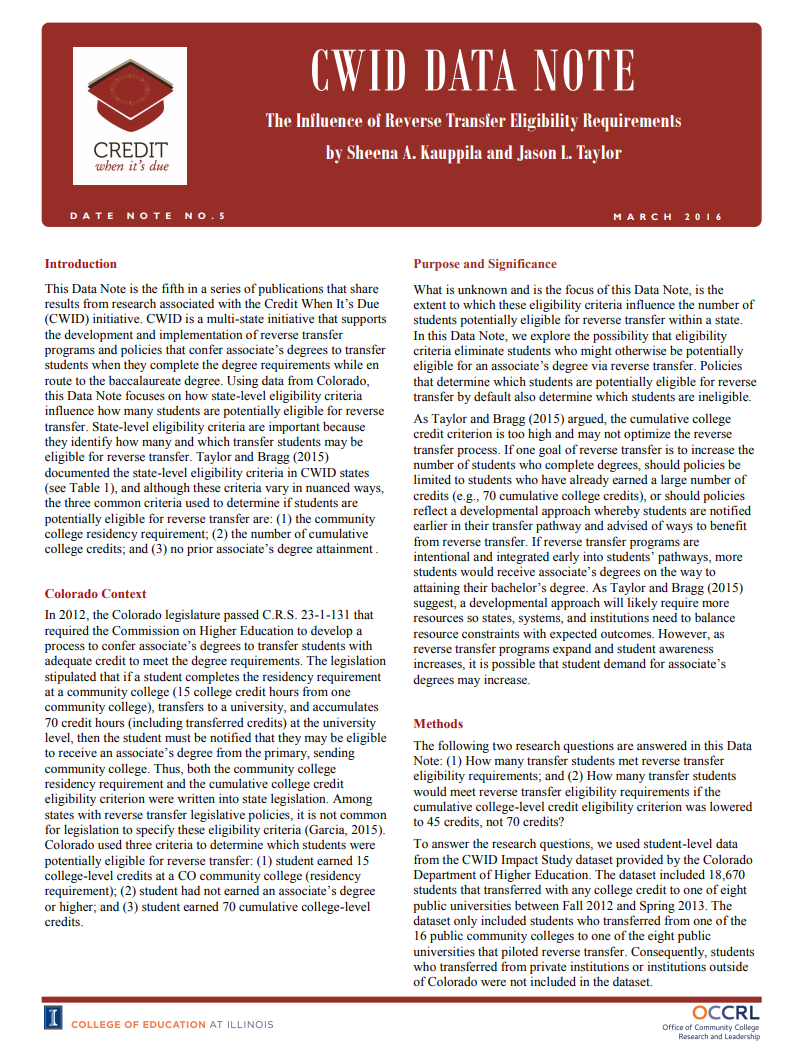CWID Data Note: The Influence of Reverse Transfer Eligibility Requirements
Author(s): Sheena A. Kauppila, Jason L. Taylor
Publisher: Office of Community College Research and Leadership (OORL), University of Illinois
Year: 2016
Description
This Data Note is the fifth in a series of publications that shareresults from research associated with the Credit When It’s Due (CWID) initiative. CWID is a multi-state initiative that supports the development and implementation of reverse transfer programs and policies that confer associate’s degrees to transfer students when they complete the degree requirements while en route to the baccalaureate degree. Using data from Colorado, this Data Note focuses on how state-level eligibility criteria influence how many students are potentially eligible for reverse transfer. State-level eligibility criteria are important because they identify how many and which transfer students may be eligible for reverse transfer. Taylor and Bragg (2015) documented the state-level eligibility criteria in CWID states (see Table 1), and although these criteria vary in nuanced ways, the three common criteria used to determine if students are potentially eligible for reverse transfer are: (1) the community college residency requirement; (2) the number of cumulative college credits; and (3) no prior associate’s degree attainment .

